React Native – Top 10 Reasons to Choose it for Cross-Platform Mobile App Development
Published on 24 Aug 2020

React Native – Top 10 Reasons to Choose it for Cross-Platform Mobile App Development
Did you know that React Native is the most popular framework for cross-platform app development? According to the 2020 developer survey, 42% of software developers preferred React Native for developing cross-platform mobile applications, making it the top cross-platform mobile development framework.
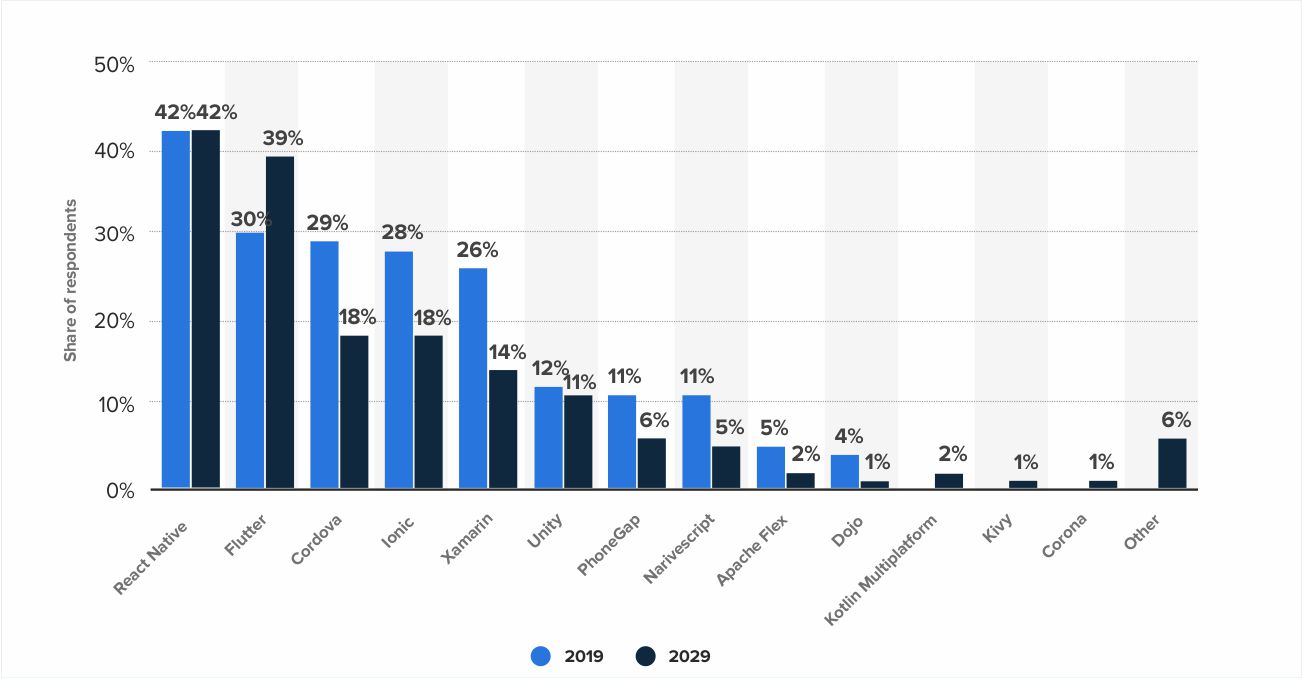
React Native uses native UI elements that make React Native based apps look and behave like native Android and iOS apps. World’s giant companies like Instagram, Airbnb, Tesla, Skype, UberEats, Adidas, and Bloomberg have trusted React Native framework for their applications. According to the Bloomberg team, it took them half the time to develop the application with React Native than what it generally takes.
Now you must have got why React Native is hailed as a big thing in mobile app development and why we are discussing React Native here.
But, before heading straight into the reasons on why to choose React Native for cross-platform mobile development, let’s get a basic understanding of the cross-platform applications and the React Native framework.
Contents of the Blog
- What are Cross-Platform applications?
- What is React Native?
- Top 10 Reasons to Choose React Native Framework
- Systango and React Native Applications
Let’s dive in:
What are Cross-Platform mobile applications?
Cross-platform mobile applications are the ones that can be used on multiple mobile platforms such as iOS, Android, and Windows. Earlier, cross-platform app development was regarded as a great solution for the early-stage entrepreneurs, however, now it has emerged as a shining opportunity for large-scale enterprises as well. Faster development, lower development costs, consistency between platforms, and reliability for prototyping are some of the benefits offered by cross-platform mobile development.
Benefits of Cross-Platform App Development
The reason why cross-platform apps are growing in popularity amongst both startups and large-scale businesses is that they eliminate the slow UX performance that is generally faced with hybrid apps and offers user experience which is quite similar to native apps.
When it comes to frameworks for cross-platform app development, Flutter, Xamarin and React Native are the three that top the list. Then, why are we talking about only React Native here? It is because according to Google search trends, React Native is beating the other two frameworks in terms of popularity among developers and businesses.
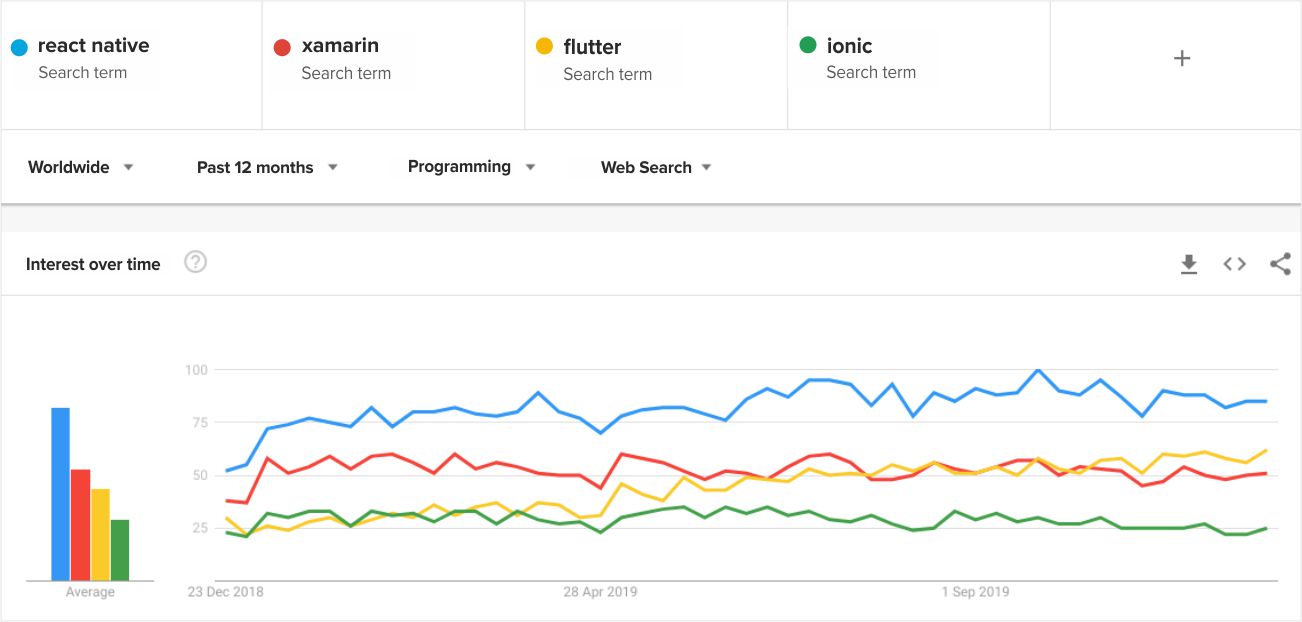
Here is an extensive comparison of the three frameworks to help you make a better choice for your application – Frameworks for Cross-Platform App Development: Flutter vs Xamarin vs React Native
How Systango Can Help You?
- We provide technical consultancy to startups, enterprises, hedge funds, and banks on how to leverage the power of technology
- We offer end-to-end development team for web and mobile development
- You can hire on-demand tech resources for your development needs
What is React Native?
Developed and maintained by Facebook, React Native is an open-source framework, which is developed to enhance user experience and reduce the complexity associated with the development process. React Native can be called as the ‘native’ version of the ‘React’, built to improve cross-platform mobile development. Using Javascript as the core programming language, React Native decreases the development time along with improving the overall performance of cross-platform apps.
But, do you know why the big brands like Facebook and Tesla are using React Native for their mobile app development? Not because it allows building seamless mobile app experience for the customer bases, but also because it curbs the limitations of native app development and enables developing cross-platform applications.
Let’s now have a look at reasons which make React Native framework the best choice for cross-platform mobile app development.

-
React Native offers Dynamic Experience:
It is simple to design and code an application on the React Native. How? React Native reduces development complexity with its code readability.. Perfect UI elements, easy programming requirements, and a positive development environment make the whole process convenient for React Native app developers.
One of the key features of React Native is Hot Reload which helps the developers to refresh the app during the development stage. It makes the entire process fast by reloading the application naturally as the code changes. The feature also helps in the live tracking of all the changes made by the developer. This helps in making the code “bug-free” easily.
It fetches real-time data for users of the application. The Hot Reload feature allows making corrections and customizations while the app is being uploaded. Thus, this system offers a state-independent perspective even during a stage change.
-
Offers Native-Like Performance:
One of the biggest drawbacks of hybrid apps built using Phonegap or Ionic is that they fail in delivering native-like user experience.
React Native combines its own Javascript with native user interface building blocks to create a user experience quite similar to that of native apps. Since the same building blocks are used to develop iOS or Android-based apps, they offer Javascript closest to that of native apps.
Further, apps built with React Native boasts of native-like UI owing to the architecture of React Native which is greatly adapted to the demands of mobile gadgets. React Native uses the graphic processing unit whereas native platforms work on central processing units. Hence, in comparison with other hybrid apps and technologies, React Native allows ultra-fast app development.
To get similar functionality as of native app, developers can mix native and React code. This further enhances the “native-like” appearance of React Native apps.
-
React Native aids in Developing MVP Faster:
Hiring a react native development company, you can reduce the development costs and cycle by half. This allows you to take bigger risks while testing your business. Using React Native framework, you can launch the first version of your app with bare minimum functionality, your MVP, and keep secondary features for later development.

Due to the single code of React Native, the chances of bugs are reduced and testing becomes easier. This means that a Minimum Viable Product (MVP) can be developed in less time than ever. Once you have understood the user behavior and the demand for more features, you can start investing in them.
As a react native app development company, we have already created generic lego-components required for login, registration, making payments, filters, notifications, showing a list, search and more, which shorten the development cycle. And, thus when you hire us to build react native apps, we don’t build these features from scratch every time, which enables us to deliver value a lot faster.
-
React Native boasts of ready-made solutions and libraries:
React Native framework offers plenty of ready-made solutions and libraries which further ease the development activities.
The testing libraries such as Chai, Mocha, Jest and Enzyme aid in writing bug-free code. Free and open-source toolchain, Expo, available with React Native helps you monitor the progress of your application and test new features. ESLint is again a great tool available with the framework which helps in checking the potential errors through a process called linting.
In addition to this, React Native offers a plenty of plugins that allow you to add different features to your application. This renders support in the development process with the aid of native and Javascript modules. All in all, apps built with React Native have fewer chances of errors and can be developed swiftly.
-
React Native allows adding New features in Less time:
Usually, you add new features to the app for your users after publishing your app on the Google Play Store and App Store. This process is cumbersome as after building the features, you have to upload the updated versions of the app on the respective app store. This will further consume more time in the latest version being available to the user as the app will first go to the approval process of Apple or Google.

Thanks to React Native’s CodePush plugin, the entire process of adding new features becomes hassle-free. With the App center cloud service, the app gets automatically updated during the run time and the users can see the changes without re-launching the application. Amazing, isn’t it?
-
React Native supports Third-Party Plugins:
Most of the frameworks do not allow third-party Plugins mainly due to security issues. Not with React Native though! Building an application from scratch is not only expensive but also time-consuming. To overcome this challenge, you would need to reuse existing components and that is where third-party plugins come into the picture.
Third-party plugins eliminate the need to use specific Web View functions. React Native consists of diversified modules that make it easy to integrate third-party plugins. There are a variety of options available with React Native which help in smoother running and faster loading, link the processes, and also offer better memory management.
When developing a mobile application using the React Native you are not required to create the cross-bridge link or store the program code while the app is running.
-
React Native Apps are Affordable:
For startups and many SMEs, the cost is one of the major factors while choosing the framework for app development. Many of the businesses look for ways through which they reduce time-to-market, survive the market competition, and get everything done in their budget.
Unlike other frameworks, React Native allows developers to use the same code for both iOS and Android platforms. The same code can be used for multiple platforms which means there is no need to learn Swift, Java, C++, or any other programming language.
React Native developers with the expertise in the Native UI library and hybrid app development environment can create an amazing app using the framework.
A professional react native development company creates an application code that can be used on both iOS and Android devices. That being said, the development process is shortened by 50 percent with the React Native framework. The lesser time it takes to develop the app, the lower is the development cost.
-
React Native has a large Community:
Backed by Facebook, React Native has a robust community online. Facebook engineers are consistently developing and updating the framework to keep it more relevant.
Moreover, being an open-source platform, the documentation for React Native is open and free for anyone in the React Native community. So, if the programmer gets stuck anywhere, there is a large community available to provide assistance. Developers also share work experience and create briefcases which helps them in writing better codes.
How will this help you with your app? The large community will empower your React Native development company to fix the issues quickly and gain that unique development skills for your app without any hassles.
How Systango Can Help You?
- We provide technical consultancy to startups, enterprises, hedge funds, and banks on how to leverage the power of technology
- We offer end-to-end development team for web and mobile development
- You can hire on-demand tech resources for your development needs
-
React Native offers Easier Debugging:
When it comes to debugging, the cross-platform approach is more efficient than native apps. React Native allows you to build the same app for different platforms which reduces the time and effort to remove errors. With a single fix, bugs can be fixed on all OSs at once, hence delivering consistent behavior across all platforms. Once you have got rid of the error, you can rest assured it is removed from Android and iOS alike.
While developing a native mobile app, developers need to use the IDE of an individual platform and learn the ins and outs of the relevant debugging tools. On the other hand, to fix errors in React Native, developers can leverage free tools such as browser dev tools, Facebook’s plug-in Nuclide, or console.log.
Last, but not the least React Native’s hot reload feature enables performing functions such as error handling at runtime and shows the results instantaneously on the running app. Thus, there are no such hassles where developers have to halt the system, apply the fix, and then restart the whole system again.
-
Stable and Optimum App Performance:
React Native utilizes a simplified data binding strategy for its codebase. To change an object, its state needs to be modified before applying updates. It results in a more stable and reliable app than that developed using other cross-platform mobile development frameworks.
In addition to this, the use of native APIs for rendering code instead of WebView results in better-performing apps.
Some of the Exceptional React Native Apps Developed by Systango
FutureBricks
FutureBricks needed a technology partner to roll out their web platform, build mobile apps, and be FutureBrick’s core technology partner to help them get through the FCA regulation process.
We delivered an intuitive application that lets investors analyze the UK based property development projects and invest in them. We helped them launch their P2P Lending web app within a short span of 3 months including successful pen testing! We then rolled out the Android and iOS mobile app built using React Native framework that now enables 1000+ lenders to invest in the move.
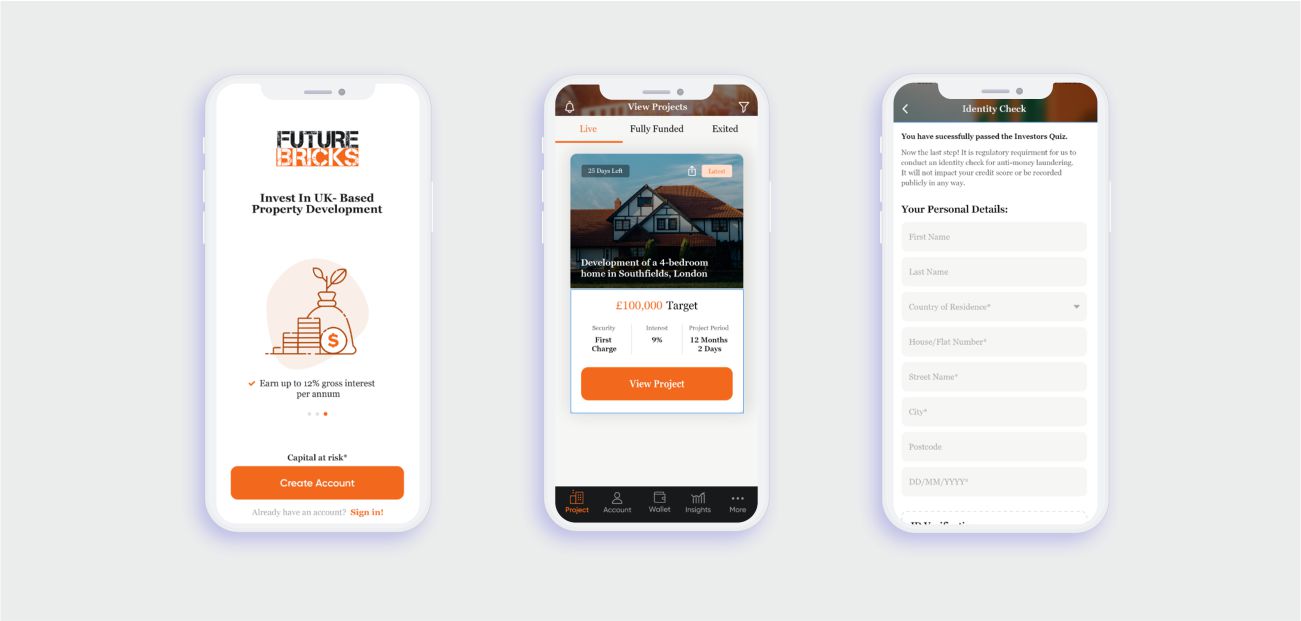
Weatherman
Weatherman developed an innovative umbrella and to make it one of the prominent products, they needed an application that connects to the umbrella, locates it via Bluetooth tracker, and offers real-time alerts.
The React Native-based application features intelligent alerts and intuitive weather forecasts to provide users with an accurate weather report.
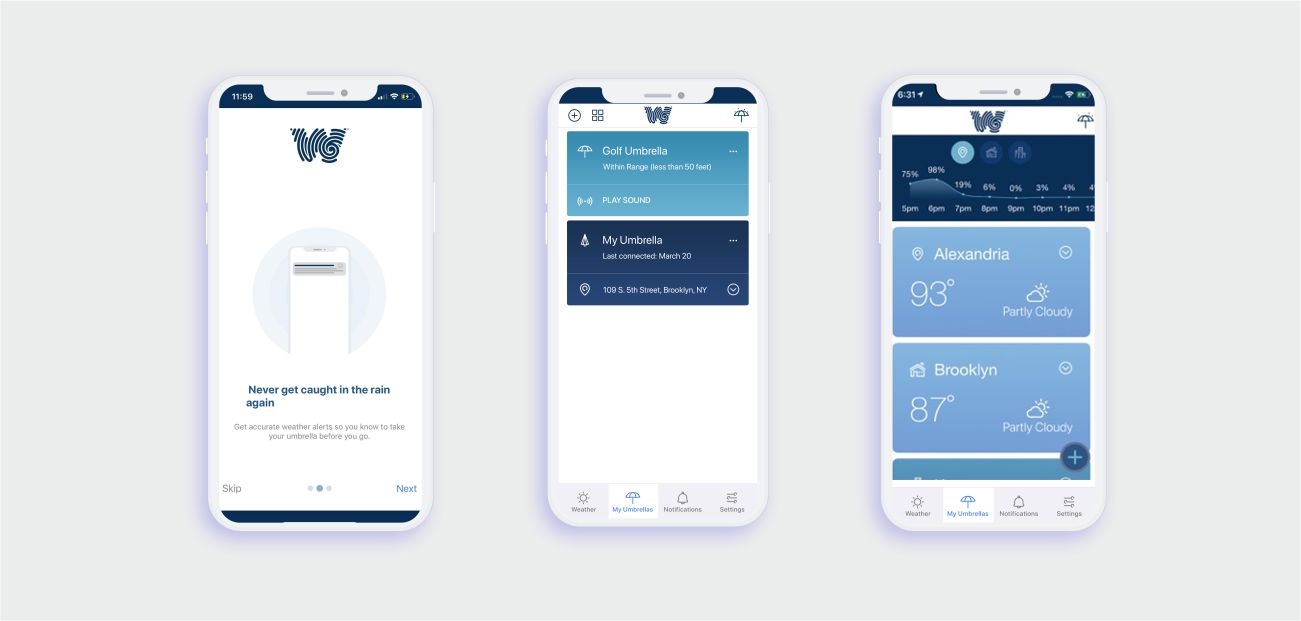
Pathways
Pathways pain relief app is now a new alternative to treating chronic pain and is the first digital tool of its kind that comprises pain relief programs and 100s of meditation that train mind and body away from pain.
Built using the React Native framework, the app lets users track the factors that influence pain over time, focus on the pain relief techniques, and offer a modern pain management program. The app integrates audio clips as also allows in-app purchases.
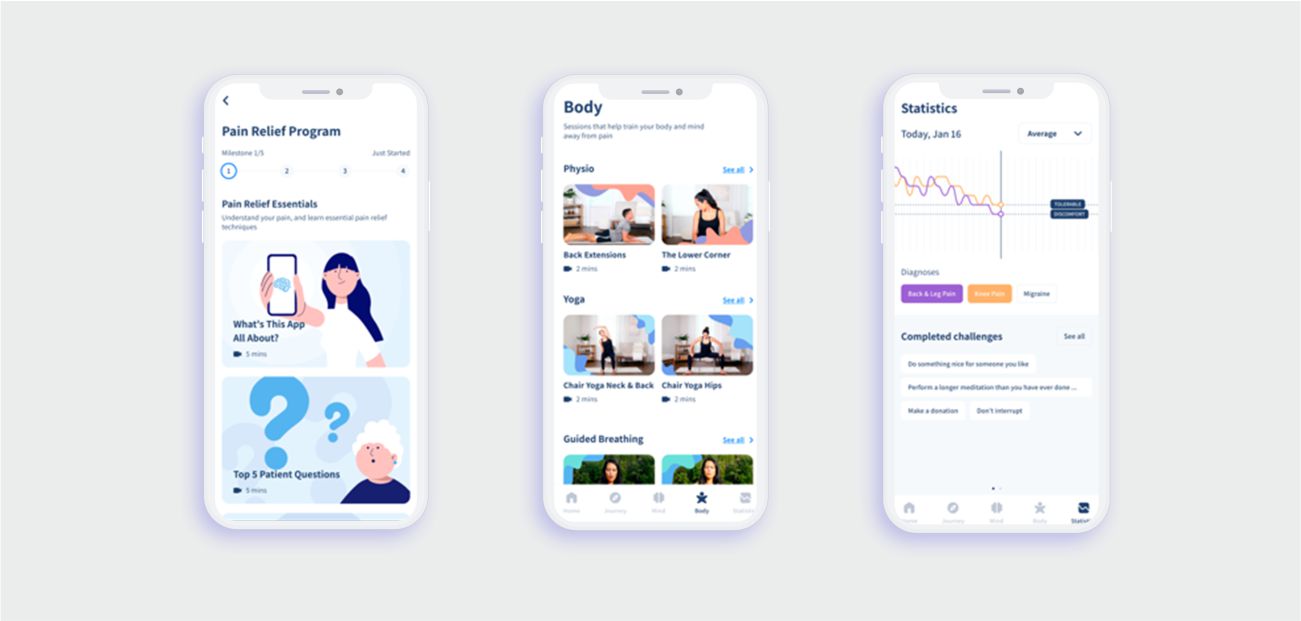
Signing Off
React Native is a buzzword when it comes to frameworks for cross-platform mobile development. The above-mentioned benefits make it the best choice for cross-platform applications. And, as we checked through the statistics, React Native is the preferred choice of the developers.
React Native is a cost-effective and future-proof investment for startups and enterprises. The framework is the best choice when you:
- Want to create an app swiftly
- Have a budget constraint
- Want to spend less time on the testing phase
- Need a convenient bug-fixing on the platforms
All you need to do is hire a professional react native development company and let the professionals design an impressive app which offers seamless performance on iOS and Android. If you have any idea in mind, and you are confused about whether React Native would be a perfect choice, then feel free to get in touch with us our React Native experts.
We offer you a free consultation, so don’t forget and Reach out to us today!
Related posts
App Development
Mobile Apps
Technology
Web Apps
Building Your App? Rust vs Go: A Guide for Business Owners
21 Feb 2024
Blockchain
News
NFT
Software Development
Technology
Web 3
How Systango Pioneered USA's 1st NFT Ticketing Marketplace for Veraticket?
01 Feb 2024
Let’s talk, no strings attached.
